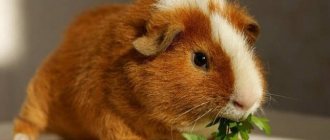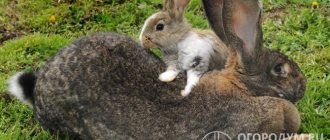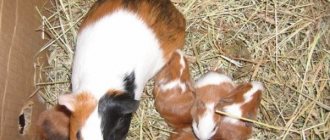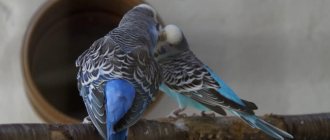- home
- Guinea pig
- Guinea pig breeds
02/06/2019 Among the representatives of such a popular animal as the guinea pig, there are more than 20 varieties. The alpaca breed has a special appearance that makes you want to touch the fur of this animal. From this article you will learn about this rodent.
A little about the origin of the species
Crossbreeding guinea pigs of different breeds results in animals with interesting characteristics. The alpaca breed was bred by scientists in the United States of America. They crossed a Peruvian pig with a Rex pig. The result was a rodent with soft, long fur, similar to that of alpacas and llamas. The fur length of representatives of the new breed reaches 12 cm.
There is no professional breeding of this breed in the Russian Federation. They are bred in other countries and mainly for exhibitions. Exhibition alpacas require special care. Babies are weaned early from their mother's milk, as their fur may become too dense, which will be a hindrance in the fight for the title. Grooming requires a lot of time and effort to meet breed standards.
Animals for an exhibition are more expensive, but for yourself it will be cheaper. The price of one individual varies from one and a half to six thousand. You can find a pet cheaper, but there is no guarantee that the animal is not sick, otherwise it would cost more. To avoid buying a sick pet, you need to pay attention to its appearance and behavior. Untidy fur and lethargy indicate that all is not well with the animal. You need to ask the breeder about the animal’s diet and lifestyle.
Rex
Rex is an officially recognized species of guinea pig, protected by the world organization UNESCO. Distinctive features: unusual short fur of a rigid structure, ears turned inward, long paws with sharp claws, pretty eyes resembling black beads. Rexes are friendly, active and calm, but in some situations they can be stubborn (for example, refusing certain food). Despite the length of the hair, it is recommended to comb it periodically with a special brush. Also follow the correct diet: fresh plant foods (vegetables, grass, greens) should predominate in the diet of these pets. Ready-made food makes up 30% of the main menu.
Rex
What they look like
Alpaca pigs are small in size. Body length reaches 25 cm, weight from 700 grams to kilograms. Females are noticeably smaller than males.
The body and head of the animals are rounded. The eyes are also round and expressive. Round ears hang down.
There are 4 toes on the front paws, and 3 on the hind paws. A peculiarity of this breed is the growth of fur from the claws upward.
Reproduction
The ability to reproduce in alpacas appears from the second month of life. However, in order to obtain viable and healthy offspring, rodents should not be crossed so early. A more optimal option would be to cross at least 4 months.
During pregnancy, females can be very aggressive and bite, so at this time they can rush at a person, and therefore you should be very careful (especially children).
The gestation period for furry pets lasts about 2 months, and at one time they can give birth to 2 or 3 babies (this number is typical in the first pregnancy, in subsequent times the number of babies can increase to 8).
Features of wool
The coat of this breed is thick and soft. The hair growth on the rump forms two rosettes, and another rosette on the head creates fashionable bangs and sideburns. Due to the rosettes on the back, hair growth is directed from the rump to the head.
In some individuals, the fur length reaches 30 centimeters. The coat can be straight or curly. As the hair grows, the curls take on the shape of spirals. The coat color can be one-color, two- or three-color.
It is not recommended to wash alpacas. Water procedures wash away the protective layer, which causes animals to catch colds and often get sick. To clean wool, it is better to use special wet wipes. But sometimes you have to wash a dirty pet; special shampoos are used for this.
The bangs do not interfere with the animal, but if the owner wants to remove strands from the pet’s face, then there is no need to trim it. You can simply collect the interfering strands and braid them into a ponytail on the top of your head.
general characteristics
Before purchasing an alpaca as a pet, it is important to familiarize yourself with all the characteristics of the animal. The alpaca guinea pig got its name from its long wool, which in its softness and smoothness resembles the wool of cloven-hoofed alpacas.
By their biological nature, these rodents are not natural. Alpaca is a hybrid specially bred by American scientists
The alpaca guinea pig got its name from its long wool, which in its softness and smoothness resembles the wool of cloven-hoofed alpacas. By their biological nature, these rodents are not natural. Alpaca is a hybrid specially bred by American scientists.
In terms of its dimensions, a guinea pig can reach a length of no more than 20 centimeters, and can weigh about 1 kilogram. However, these indicators mostly concern males, and females of the species are usually smaller and lighter.
By itself, it is quite fluffy and thick, reaching a length of 12 centimeters. Moreover, the entire body is covered with wool, including the head (here the alpaca has real bangs).
As for the color of the animal, it can be very diverse (usually multi-colored rather than monochromatic). So, quite often there are combinations of white and black, red, etc.
The lifespan of alpacas varies between 5–8 years. Most often it is at the lower end of this range, but if the animal is healthy and properly cared for, it is possible to extend life by several additional years.
Hygiene and conditions of detention
This coat needs daily care. From the very moment it arrives in the house, your pet needs to be taught to brush itself. Long hair quickly becomes tangled and curls into tangles. The tangles create discomfort, and combing them is painful for your pet.
The best bedding option for representatives of the alpaca breed is considered to be hay or wilted grass.
It is not recommended to keep guinea pigs, including alpacas, in noisy rooms, in the same house with children and loud other pets. They are afraid of loud noises, and they can get sick due to stress and a tense environment. But in peace and quiet they will feel comfortable and give all the joy of communication to their owners.
Alpaca cage
Generally speaking, alpacas should be kept in a cage. However, this cage must be large and spacious. The optimal cell size is considered to be 50 centimeters by 70 centimeters. Thanks to this area, the animal will be able to move freely around its home and feel some space.
It is not recommended to keep several animals in one cage, as aggressive fights may arise between them over the division of territory.
The bottom of the cage must be covered with dry grass, which should be changed regularly.
During the warm period of the year - spring and summer - you can use fresh grass, however, it must first be disinfected (this can be done with boiling water) so that the animal does not contract diseases or become infected with pests.
In addition, the cell itself should not be empty. It needs to be filled with a variety of additional elements and items for entertainment, toys. For example, you can put a running wheel or a house.
Choose a cage made of durable material (it is best to give preference to metal or wood). Thus, the animal will not be able to break its home, and it will last for quite a long period.
Health and diet
Representatives of this breed are in good health. Animals' bodies are not susceptible to viruses and infections, so they rarely get sick. Problems can only arise with the animal's fur, but they can easily be solved with proper and regular hair care, as well as proper nutrition.
The diet consists of vegetables, herbs, and fruits. Cereals and grains should make up no more than 25%. Just like other pigs, animals should not be given meat, dairy products, canned food and sweets.
It is advisable not to place the cage with your pet in drafts or in the sun. Like other pig breeds, alpacas are sensitive to temperature changes. A comfortable heat level for alpacas is 22–24 degrees. In summer, it is advisable to take them outside or onto the balcony, but you need to take into account that in the heat and direct sunlight the pet may become unwell.
If the animal is not allowed to run around in a safe space, then it may be susceptible to obesity. Obesity is bad for your pet's health, so for its well-being it is better to secure some space so that the animal can run around to its heart's content.
Subtleties of care
Guinea pigs are quite unpretentious; the main difficulty in caring for a rodent lies in processing the fur to avoid its severe tangling. The pig needs to be brushed 3-4 times a week.
To avoid having to pull the hairs, it is better to lightly spray them with water from a spray bottle. Keep in mind that you can start combing only after the tangles have been completely removed. If the animal’s fur is too long and too thick, then by summer you can trim the pet a little. Also, the hair of lactating females is cut, but not completely, but only the areas near the nipples.
From time to time, the guinea pig needs to be bathed with a special shampoo for animals, after which it is blotted with a warm terry towel and dried with a hair dryer (keep it at a distance so that too hot air does not burn the small animal).
Some breeders curl the hair of their rodents with curlers, thus the animal gets the opportunity to move quickly, and the hairs do not roll off or get dirty
The ears of a hairy rodent are carefully cleaned with cotton wool, the eyes are treated as necessary and sharp claws are trimmed.
Every breeder must understand that the health of pets primarily depends on the correct diet. Its imbalance leads to rickets, scurvy, obesity, allergies and cardiovascular diseases.
Pathologies of non-infectious origin can also include:
- a cold that quickly turns into bronchitis and pneumonia;
- keratitis and acute conjunctivitis;
- otitis;
- epilepsy;
- baldness;
- cystitis;
- malignant tumors.
The most common viral infections are:
- plague;
- paralysis;
- pseudotuberculosis;
- amoebiasis;
- toxoplasmosis;
- trichomoniasis;
- salmonellosis;
- enteritis;
- herpes;
- ringworm.
Also keep in mind that due to the peculiarities of physiology, any injury or fall can lead to the death of a furry pet.
The rules for caring for a long-haired guinea pig are discussed in the following video.
Owner reviews
Owners of alpaca pigs describe their pets as smart, sociable and friendly. Animals communicate with each other using a special sound. They also find a common language with other animals and with their relatives.
Alpaca pigs can be taught to respond to their name and eat at the same time. They get used to the people they interact with every day. They recognize their owner when surrounded by strangers.
Alpacas love to “talk” at night. But don't let it scare those who are quiet and don't last more than 15 minutes.
The peaceful nature and gentle disposition indicate the adaptability of alpaca pigs to comfortable living in a family. Their beauty will delight the owners, but a lot of effort will be spent on caring for this beauty. Daily brushing will be an additional procedure to other necessary pet care procedures. Therefore, if the owner wants to have an animal with luxurious wool and is ready to care for it, then alpaca will be an ideal option.
Description of the Alpaca guinea pig
Everyone knows a Peruvian pig with a very aristocratic appearance, reminiscent of a wig when you look at it from above?! So the alpaca is in no way inferior to her! It's just a curly wig! And some exhibition visitors mistake this pig for a Maltese dog. But of course, everyone will want to touch her, and then squeeze her. And the pig will not object, and maybe even talk to you by quietly nodding.











